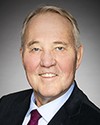moved that Bill C-247, An Act to amend the Criminal Code (passive detection device), be read the second time and referred to a committee.
Mr. Speaker, I am proud to rise today to speak to my private member's bill, Bill C-247. If passed, Bill C-247 will prevent injuries and deaths from impaired driving, which continues to cause needless and heartbreaking tragedies in communities across Canada. Specifically, Bill C-247 will increase deterrence and rates of apprehension by allowing the use of passive alcohol sensors at roadside screenings for impaired drivers. I will explain the details of that proposal shortly.
In addition, Bill C-247 would rename the crime of “impaired driving causing death” to “vehicular homicide” as a result of impairment. That change would denote greater moral responsibility for the crime of impaired driving, while preserving judicial discretion to tailor sentences to particular circumstances.
The change is based on a proposal called Kassandra's law that was brought forward in 2015 by the Conservative member for Langley—Aldergrove. I am grateful that he has seconded Bill C-247 and I am pleased that we can work together across party lines to prevent drunk driving for the benefit of all Canadians.
Impaired driving has touched constituents in every riding across the country. My riding of Mississauga—Streetsville is no exception. Last year during the summer, my constituents lost a local leader, educator, mentor, and most importantly a father and a husband. Out of respect for the family, I will refrain from using his name.
Sadly, one night during July of 2015, while riding his bicycle, he was struck from behind by an impaired driver and pronounced dead at the scene. As a secondary school teacher, he spent years dedicating his time to educating and inspiring youth within my riding. His former students and those who knew him conveyed to me what a positive impact he made on those around him. I understand that he inspired many of his students to pursue post-secondary education.
Tragically his life was cut short by an intoxicated driver, someone who chose to put lives at risk rather than call a cab. His death denied five children their father, denied a wife her husband, denied students their teacher, and denied future young people a mentor who could have helped them make positive choices in life.
Soon after being elected, I received an email from a constituent who was greatly saddened by what had happened and also concerned that such senseless tragedies continued to occur at alarming rates in our country. She implored me to take action, and I am now doing so with Bill C-247.
As I said, if passed, the bill will prevent injuries and deaths from impaired driving. It will do this with two measures to increase deterrence and rates of apprehension. The first measure authorizes the use of passive alcohol sensors at roadside screenings for impaired drivers. What would this change mean?
Currently law enforcement in Canada conducts organized stops at check points to screen drivers for impairment. For example, Ontario conducts a program called reduce impaired driving everywhere, RIDE. When stopping drivers, officers apply breath tests if they, through odour or appearance, reasonably suspect a driver has consumed alcohol. However, according to a 2009 report of the House Standing Committee on Justice and Human Rights, only a small fraction of impaired drivers are currently apprehended.
Bill C-247 would increase apprehension and deterrence by authorizing the use of passive alcohol sensors by police at organized stops, or when they had reasonable grounds to make a stop for suspected impairment. Passive alcohol sensors detect alcohol when placed near a driver's face. A positive reading would provide reasonable grounds to conduct a breath test on an approved screening device.
I am confident that the use of passive alcohol sensors at organized roadside screenings will be charter compliant. I say this because, in its decision in Dedman v. The Queen, the Supreme Court held that the somewhat random searches in Ontario's RIDE program were constitutional because driving was a “licensed activity that is subject to regulation and control for the protection of life and property.” The legal takeaway is that driving is a licensed activity that is subject to reasonable limits because of the risk to others who share the roads. Using passive alcohol sensors would be a reasonable limit that is far more effective at catching impaired drivers than the current method employed at roadside screenings.
Mothers Against Drunk Driving Canada has endorsed Bill C-247, citing passive alcohol sensors' benefits. Andrew Murie, CEO of MADD Canada, said, “The ability for police to use Passive Alcohol Sensors will have a great impact on reducing the number of alcohol impaired drivers on our roadways. This private member bill...will allow police to maximize the technology that is available to detect drinking drivers at roadside. MADD Canada appreciates [these efforts] to lower the number of alcohol related crashes, deaths and injuries”.
Now I want to spend some time on the second measure in Bill C-247. As I said, the bill would also rename the crime of “impaired driving causing death” to “vehicular homicide”. This change would denote greater moral culpability, and that is appropriate. The decision to get behind the wheel while impaired is completely reckless, and the devastating consequences are predictable. A conviction should reflect that culpability.
To raise a recent example, this is the crime for which Marco Muzzo recently received a 10-year sentence for killing three children and their grandfather. That tragedy was directly caused by his decision to get behind the wheel, with a blood-alcohol level nearly three times the legal limit.
The Criminal Code of Canada states that a person commits homicide when directly or indirectly by any means causes the death of a human being. Drunk driving causing death would be a form of culpable homicide because it is morally and legally blameworthy. The moment an impaired driver gets behind the wheel, he or she puts others at risk. Words carry weight, they are not empty, and this culpability needs to be accurately reflected in Canadian law. At the same time, this change would preserve judicial discretion to tailor sentences to individual circumstances.
The proposal to call the crime of impaired driving causing death what it really is, vehicular homicide, was originally brought forward as Kassandra's law after Kassandra Kaulius of Surrey, B.C., a 22-year-old victim of impaired driving. The Conservative member for Langley—Aldergrove tabled Kassandra's law as Bill C-652 in the previous Parliament, and again I am pleased that he has seconded Bill C-247.
Last week, I had the opportunity to meet with Kassandra's parents, Markita and Victor. When I was discussing this upcoming speech, Victor pointed out that today, May 3, will mark five years to the day that their beautiful 22-year-old daughter lost her life.
Throughout her life, Kassandra was a lively and enthusiastic person who loved sports. As her parents recall, from the time she was three years old she was already running around her family's backyard playing sports with her older siblings. As she got older, her passion for sports grew. She competed on her high school volleyball, basketball, and softball teams, eventually receiving athletic scholarships, and had dreams of one day becoming a teacher.
On the one hand, the inspiration behind this bill was a teacher who inspired students and whose life was unjustly taken from him. On the other hand, part of the bill has been named after a young woman who dreamed of becoming a teacher and whose life was unjustly taken from her.
I also want to mention Families For Justice, the organization Markita and Victor have worked so hard to establish and have used to promote awareness of impaired driving. They have collected over 100,000 signatures in support of their cause. I commend their efforts to provide support and counselling services for families that have lost loved ones.
I do not need to remind the House of the harms of impaired driving. According to MADD, impaired driving continues to be the leading criminal cause of death in Canada, claiming almost twice as many lives per year as all categories of homicide combined.
In 2010, impaired driving accounted for approximately 1,082 deaths, 63,281 injuries, and $20.62 billion in financial and social costs. What is important to note is the fact that Statistics Canada indicates that 53% of all adult victims were between the ages of 18 and 35. This means that Canada is being denied young minds that would shape the future of the country.
Furthermore, our country's impaired driving record has been, and remains, poor in comparison to other developed countries. Millions of Canadians continue to drive after drinking, one reason being they believe they can do so with relatively little fear of being apprehended.
An international review of 15 countries reported that Canada has the second-highest rate of alcohol involvement in fatal crashes. Similarly, a Transport Canada study found that Canada had the highest rate of impairment among fatally injured drivers of eight countries in the Organisation for Economic Co-operation and Development. Furthermore, Canada had the highest rate of alcohol-related traffic fatalities as a percentage of total fatalities among 13 countries.
Although the selective breath testing programs that are currently in place are a productive step toward preventing impaired driving, the majority of impaired drivers go undetected at sobriety checkpoints. MADD reports that of the four million to five million drivers who are stopped each year at sobriety checkpoints, less than 1% are subject to roadside breath testing on an approved screening device.
It is for this reason that the main measure in my bill, the authorization of passive alcohol sensors, is evidence-based and necessary. These devices detect the presence and approximate amount of alcohol in a driver's exhaled breath by sampling the ambient air near his or her mouth.
The device also contains a pump that draws in air over a sensor that reacts to alcohol and registers a reading within a matter of seconds.
Passive alcohol sensors provide an easy, reliable and non-intrusive method of efficiently screening a large number of drivers with minimal delay, which will ultimately save more lives each year.
Passive alcohol sensors have been around for some time. The technology is not new, however, initially they were units on their own. It is important to note that when discussing passive alcohol sensors, for the most part, we are simply discussing a feature built into many of the approved screening devices already carried by peace officers. This means that the express authorization of a passive alcohol sensor would most likely allow officers to use their current devices, optimizing the tools already available to them.
As Robert Solomon, a law professor at Western University, has said, “There is currently nothing preventing Canadian police from using PASs.”
Regardless, amendments to the Criminal Code explicitly authorizing police to use passive alcohol sensors would be effective. It would create a national standard which would ultimately reduce the confusion that otherwise arises from having 13 different provincial and territorial enforcement powers and practices. Police officers would also be more likely to use PASs if they are given express statutory authority to do so. Furthermore, the publicity surrounding the introduction of a national passive alcohol sensor program together with the knowledge that police officers are using more sophisticated detection methods would increase the perceived risk of apprehension and ultimately have a deterrent impact.
Over the past months, I have consulted with numerous police officers and police chiefs all over the country. It is apparent that the overarching consensus is that the more tools available to the police, the better.
To conclude, the problem of impaired driving needs to be better addressed by Parliament. The goal of my bill is not only to change how we view impaired driving offences, but to reduce instances of deaths and injuries by employing modern technology. Hopefully, with the passage of Bill C-247, we will further deter drinking and driving to safeguard Canadians, their families, and our communities.
I look forward to this bill going to committee, and I welcome amendments as well.









